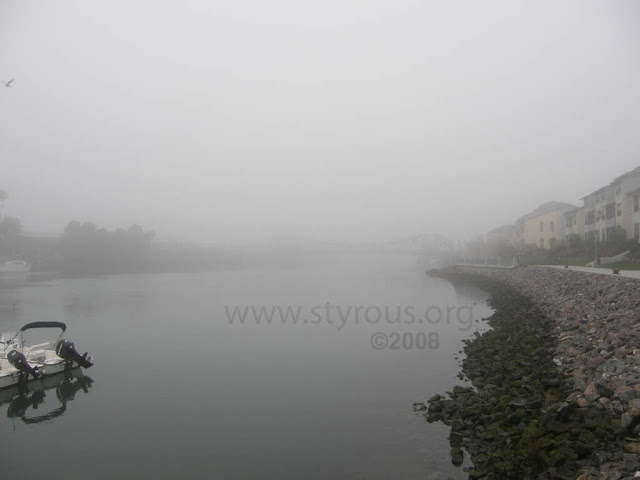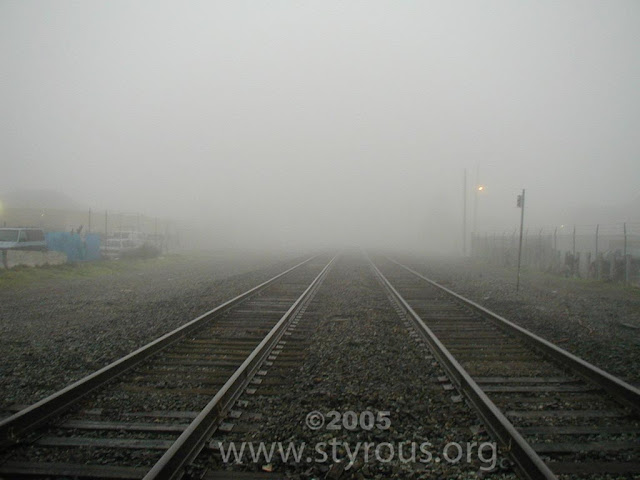I have loved fog since I was a little boy. It has always seemed mysterious and romantic to me. I loved the deep, gravely sound of the foghorns that were dampened and softened by the velvety richness of the fog but somehow still managed to carry for vast distances. I remember dense, low-lying fogs that hugged the streets and gave the street lights halos; fogs so dense people had to drive with care in the city. I remember lying in my bed at night with the window slightly open and the sheer curtains gently billowing in with the soft breeze and the soothing sound of a foghorn.
On those days when the air has gotten yucky from the pollution of factories, cars and cows (?), I love the fog that rolls in at night to scour the atmosphere and scrape it clean again for the next morning; and I delight in the sparkle of the dew on the grass and the crisp, crystal-clear air.
I love the photographs I've taken in the fog which has softly rendered them naturally to almost black and white. And I love the occasional shots where there is a flash of color that pierces through the misty shroud to startle the vision for a moment.
On those days when the air has gotten yucky from the pollution of factories, cars and cows (?), I love the fog that rolls in at night to scour the atmosphere and scrape it clean again for the next morning; and I delight in the sparkle of the dew on the grass and the crisp, crystal-clear air.
I love the photographs I've taken in the fog which has softly rendered them naturally to almost black and white. And I love the occasional shots where there is a flash of color that pierces through the misty shroud to startle the vision for a moment.
The old foghorns don't sound anymore. Since automation of lighthouses became common in the 1960s and 1970s,
most older foghorn installations have been removed to avoid the need to
run the complex machinery associated with them, and have been replaced
with electrically powered diaphragm or compressed air horns.
Activation is completely automated: a laser or photo beam is shot out
to sea, and if the beam reflects back to the source (i.e., the laser
beam is visible due to the fog), the sensor tells a computer to activate
the foghorn. In many cases, modern navigational aids have rendered
large, long-range foghorns completely unnecessary, according to the International Association of Lighthouse Authorities.
The romantic sound of the old foghorn is gone. Also, it seems like those deep, low-lying fogs don't happen very much anymore; but on the rare occasions when they do, I revel in them.
photos by Styrous®
There is a marvelous composition, Foghorn Requiem, on YouTube.
There is an hour & a half video by Seth Freiberg of San Francisco foghorns his father recorded in the '80's on YouTube.
Styrous® ~ Sunday, October 13, 2013
~
































No comments:
Post a Comment
PLEASE NOTE: comments are moderated BEFORE they are posted so DO NOT appear immediately.
Thank you.